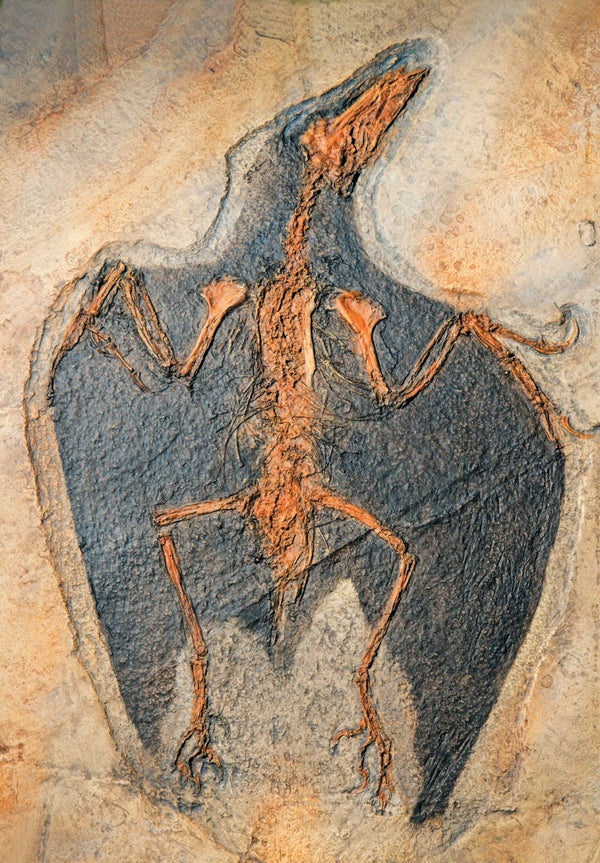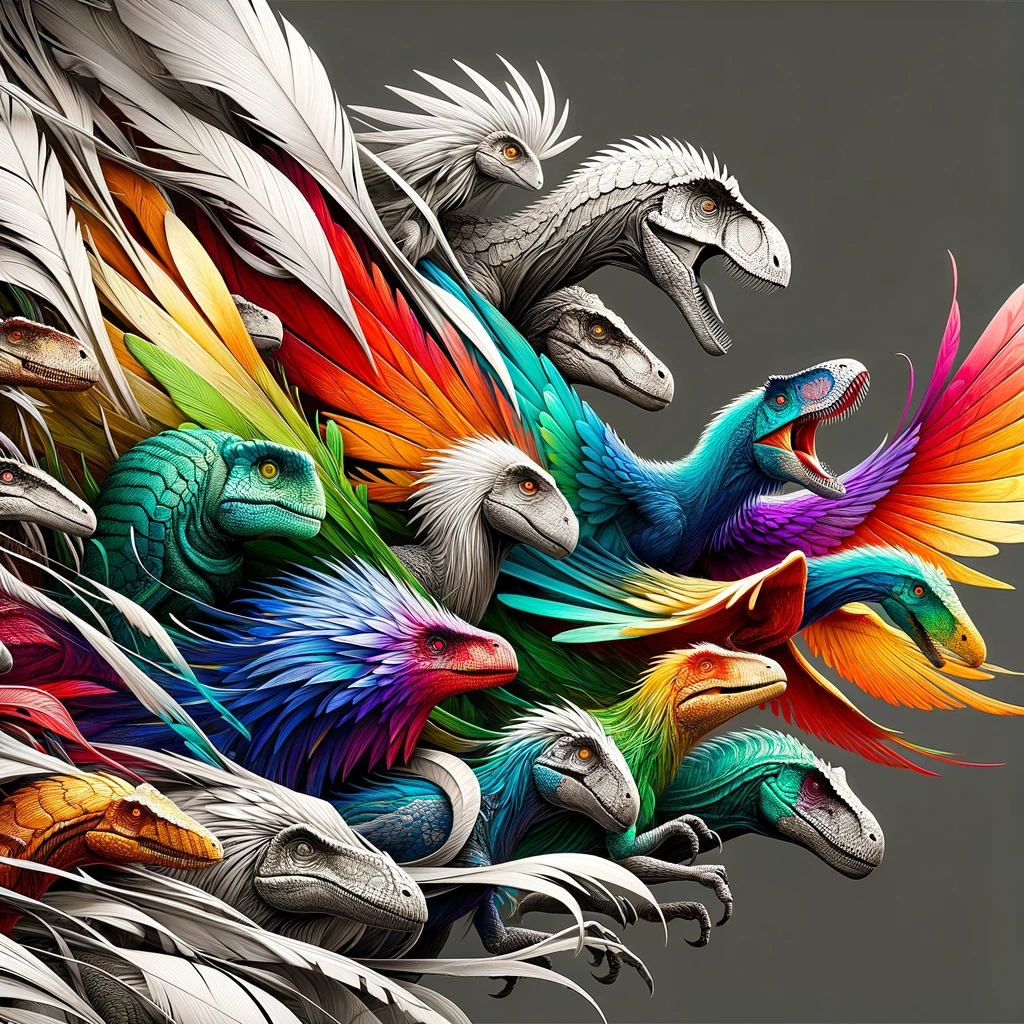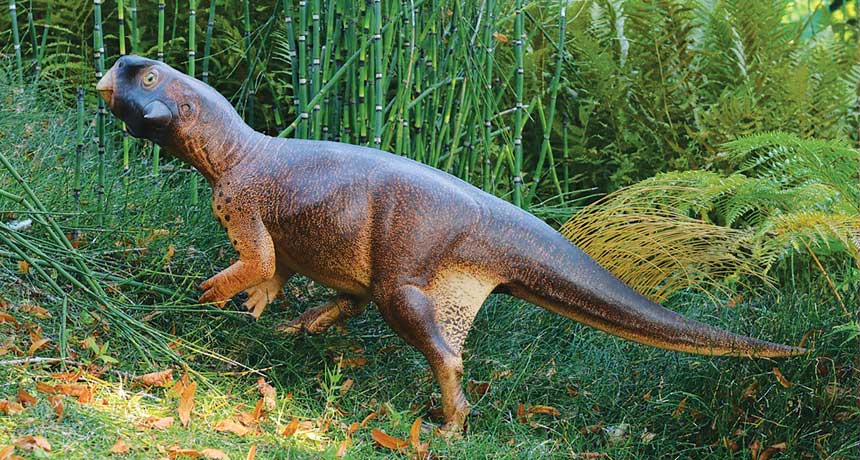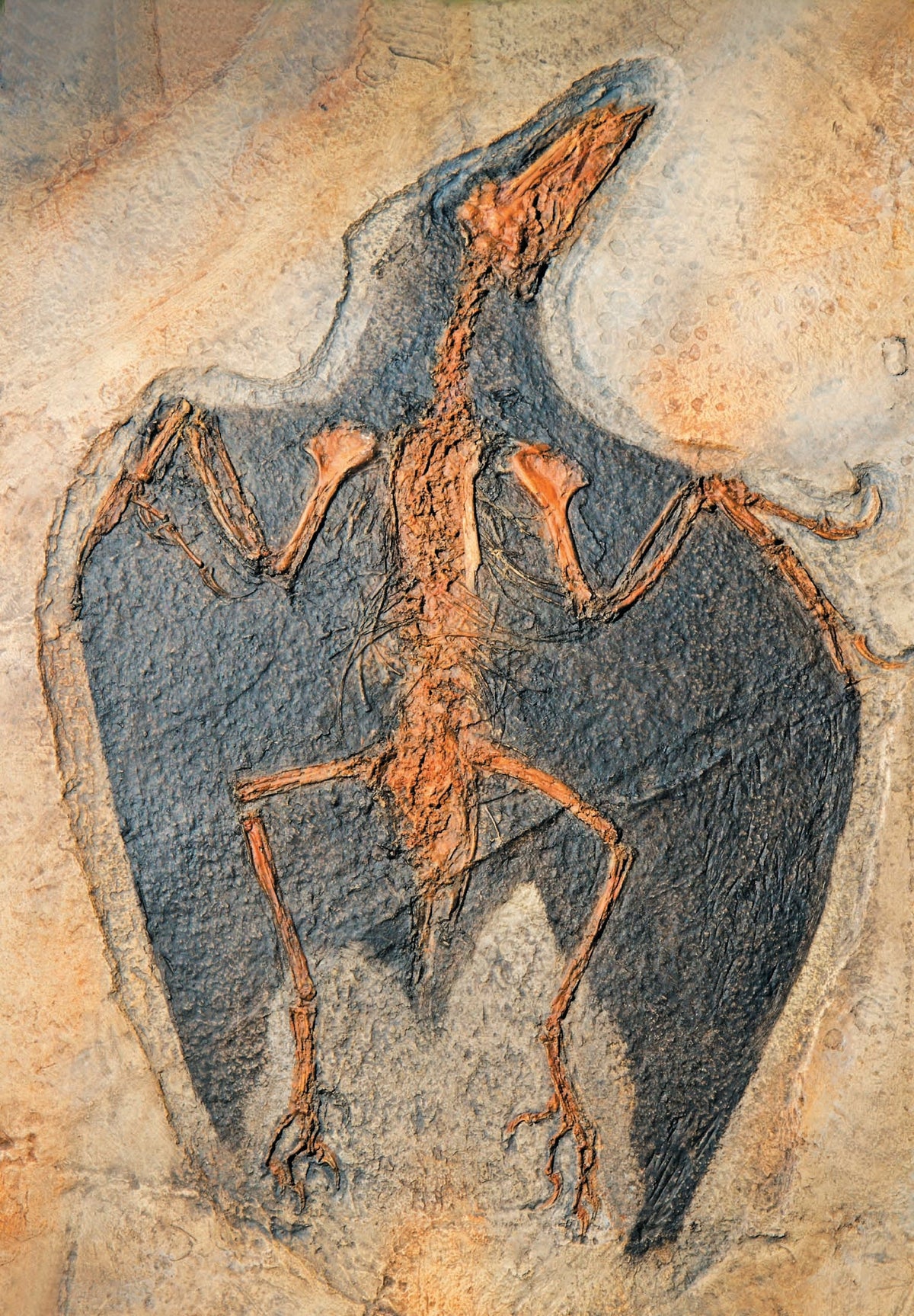What Color Dinosaurs Were: Unveiling Prehistoric Hues
Dinosaur colors have long intrigued scientists and the public alike. Recent studies suggest they sported a range of hues, from muted greys and browns to striking patterns and bright colors.
Understanding the coloration of dinosaurs provides insight into their behavior and environment. Researchers employ advanced techniques like microscopic analysis of fossilized skin and feather structures to hypothesize the potential palette of these prehistoric creatures. Such methods reveal that some dinosaurs likely used color for camouflage, while others displayed vibrant feathers for mating displays, similar to modern birds.
By looking at closest living relatives like birds and reptiles, scientists can make educated guesses about the colors that once adorned these magnificent beasts. This field of study not only satisfies our curiosity but also enhances our knowledge of dinosaur ecology and evolution.

Credit: www.scientificamerican.com

Introducing Prehistoric Palette
Curious minds wonder what colors dressed the dinosaurs ages ago. Paleontologists used to make guesses. Now, modern science helps us paint a clearer picture. This blog post dives into the ancient hues that once adorned these majestic creatures.
From Movies To Reality: Shifting Perceptions
When you think of dinosaurs, what colors come to mind? Movies often show them in greens and browns. Science brings new insights. The real colors of dinosaurs might surprise you. Let’s explore what they really looked like.
Broad Strokes Of Dinosaur Colors In The Past
Old books and toys gave dinosaurs simple colors. Greens, browns, and grays were common. We now know it was more complex. Their colors could have been as varied as birds today. Discover the vibrant palette of our planet’s distant past.

Credit: www.snexplores.org
Methods Of Color Detection
Long lost to history, dinosaurs once painted a vivid picture on ancient Earth. Scientists have unearthed secrets to reveal their true colors. They use clever techniques to detect these hues. This is how they bring the colors of dinosaurs to light.
Melanosomes And Pigment Analysis
Scientists can tell dinosaur colors by looking at melanosomes. These are tiny structures found in cells. They hold the pigments that give color. Different shapes and sizes in melanosomes suggest different colors, like black, brown, red, or even iridescent hues.
- Scanning Electron Microscopes (SEM) zoom in on melanosomes
- Different shapes mean different colors
- Synthetic melanosome creation confirms color theories
Fossilized Evidence And Structural Color
Not all dinosaur colors come from pigments. Some come from structural color. This happens when microscopic structures bend light. It works like a prism to show certain colors. This is often seen in bird feathers today.
- Analyze fossilized skin and feathers with special tools
- Study patterns that show structural coloration
- Compare with modern animals to guess dinosaur colors
Case Studies Of Colored Dinosaurs
The mysteries of dinosaur colors have long captured our imagination. Long extinct, these creatures left behind clues that scientists are piecing together. Here are case studies of colored dinosaurs that highlight the astonishing revelations.
The Revelation Of Psittacosaurus
Psittacosaurus, a small plant-eating dinosaur, revealed its colors to scientists. Preserved skin and patterns allowed experts to recreate its appearance.
- Color: Muted browns and a light underbelly.
- Function: Camouflage in forest environments.
- Evidence: Melanosomes, pigment-containing cells, identified through electron microscopy.
Evidence From Feathered Dinosaurs
Feathered dinosaurs like Microraptor and Anchiornis offer clues about coloration. These winged creatures had preserved feathers that held the secrets of their hues.
| Dinosaur Species | Color Discovery | Significance |
|---|---|---|
| Microraptor | Iridescent Black | Display or hiding in plain sight. |
| Anchiornis | Gray and Red Feathers | Mating displays or social interactions. |
Scientists use laser-stimulated fluorescence imaging to uncover these details.

Credit: www.scientificamerican.com
Function Of Color: More Than Meets The Eye
Imagine living in an age where gigantic reptiles roamed the Earth. The dinosaurs’ world was vibrant and full of color. But why were dinosaurs colorful? The colors of these ancient beasts were not just for show. They played a critical role in their survival. Colors helped dinosaurs blend in, stand out, and communicate with one another. Let’s dive into how colors functioned in the lives of these magnificent creatures.
Camouflage And Survival Strategies
Dinosaurs used colors to stay alive. Camouflage was their secret weapon. Predators needed to blend in to ambush prey. Prey needed to hide from those looking for a meal. Herbivores often boasted green-hued scales to mingle with lush foliage. Carnivores displayed patterns that broke up their outlines among trees and plants. Let’s look at some examples:
- Velociraptor: Likely had patterns to stalk prey unnoticed.
- Edmontosaurus: Mottled colorings could have mirrored dappled sunlight through leaves.
Mating Displays And Social Signals
Colors also shouted messages like “Look at me!“. Dinosaurs flaunted vivid colors to attract mates. Like the peacock’s feathers, bright hues suggested health and good genes. Social signalling was vital for group-living dinos. It strengthened bonds within packs. Check out some interesting social uses of color:
- Display features, such as the Triceratops’ frill, may have been brightly colored.
- Dominant dinosaurs possibly flaunted standout shades to show off their status.
Challenges In Color Reconstructions
Imagine dinosaurs in all their glory, but what colors were they really? This riddle has puzzled scientists for decades. We can guess, but knowing the exact colors of these ancient beasts is tricky. Here, we’ll explore how scientists face a tough time deciding dino colors and why it’s not as easy as it looks.
Limitations Of Current Scientific Methods
Science has come far, but it’s not perfect. Current tools help a bunch, but they can’t show everything. When scientists work to bring dinosaur colors to life, they must deal with limits.
- Fossil condition: Most times, fossils don’t save color.
- Technology: Even with top tech, small details like pigment can be lost.
- Limited samples: Not many fossils have color clues, so guesses are often made.
Interpreting Color From Incomplete Data
Think of fossils as puzzles with missing pieces. We have to think smart to guess the colors.
Microscopic hints are key: We look close to see small color bits. These bits hint at the possible colors.
Making informed guesses: Using knowledge from birds and reptiles helps. They are like dinosaurs’ cousins!
Comparing with today’s creatures: Current animals give us clues. If they live like dinos did, perhaps they shared colors too.
Implications For Present-day Species
When we think of dinosaurs, their massive size and fearsome visage often come to mind. But scientists have discovered these ancient beasts sported a wide array of colors. This revelation has far-reaching implications for our understanding of present-day species, primarily birds and reptiles. Investigating dinosaur coloration not only satisfies scientific curiosity but also provides clues about the evolution and behavior of animals today.
Understanding Bird Plumage Evolution
The discovery of color in dinosaurs enriches our knowledge of bird plumage evolution. Birds descended from theropod dinosaurs, a group known to have feathers. The presence of feathered dinosaurs with preserved color patterns suggests a shared evolutionary trajectory in terms of display and camouflage tactics.
- Structural Colors: Some dinosaurs had microscopic features within their feathers that are similar to those creating iridescence in modern birds.
- Pigment-Based Colors: The detection of melanosomes, pigmented structures, in some dinosaur species helps understand the development of complex feather patterns.
These discoveries support the idea that many bird species’ vivid colors and complex mating displays might have ancient origins. This insight prompts further study into how color plays a role in survival and reproductive success.
Comparative Insights From Reptilian Biology
Reptiles, like birds, are also dinosaurs’ close kin. Investigating dinosaur colors sheds light on reptilian biology and the adaptive significance of their coloration strategies.
| Dinosaur Color Traits | Present-Day Reptile Parallel |
|---|---|
| Camouflage | Chameleons adjusting colors for concealment |
| Social Signaling | Anoles displaying vibrant dewlaps |
| Thermoregulation | Dark-colored reptiles absorbing heat efficiently |
Understanding these correlations enables scientists to infer how dinosaurs might have lived. It also encourages research into the extent these mechanisms have been preserved or modified in present-day species. Thus, the palette of dinosaur colors informs current ecological and evolutionary studies about reptilian and avian life.
Conclusion
Diving into the vibrant world of dinosaur colors has been a journey of discovery. We’ve unearthed clues and theories, imagining the hues that once roamed ancient landscapes. Let’s continue to marvel at paleontology’s ability to paint pictures of the past.
As science progresses, we can only anticipate more revelations about our planet’s prehistoric palette. Keep exploring and stay curious.
